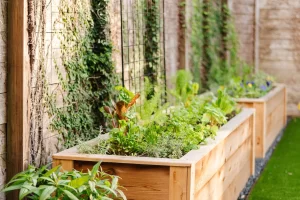Lighting is a crucial part of designing landscape effects. It is possible to make your landscape pop by lighting certain elements. You want to be able to see your home from the street. Additionally, you want to be able to easily walk from your car to the entrance of your house without getting lost. You should make sure that your outdoor spaces are lit at night so they can be used. These are great uses for light.
Let’s look at indirect ways light can be used through shadows. It is easy to forget about shadows. Shadows will always be there, unless you are looking to shine spotlights all over your property. They will be there. It is not something you should do. Shadows can’t be avoided, so include them in your landscape design to bring out the best of your surroundings.
You can use shadows, also called silhouette lighting, in many different ways to complement the outdoor light fixtures. You can achieve dramatic effects with shadows and lights that are impossible to see during the day. Experts with extensive experience in lighting design can make a big difference.
While casting light is one thing, it is important to consider how shadows can affect the outcome and increase the impact of shadowing. Shadows can make a big difference in the overall landscape lighting outcome. Landscape Lighting Pro has over 20 years experience and hundreds upon hundreds of lighting projects. This allows you to maximize the use lights and shadows to create your own unique look. It’s not easy to find that. Here are some ways to include shadows in your landscape lighting design.
Casting Shadows:
Shadow casting is an effective way to use shadows. A backdrop is necessary to make this work. A backdrop could be a wall or the side of your home. Shadowing creates a silhouette on your backdrop wall.
Shadowing is a popular technique to highlight interesting profiles of trees and sculptures. This is achieved by shining a spotlight directly on a feature, creating shadows on the background that are opposite to the object. This effect is enhanced by lighting the object and shadowing the background. This technique is especially useful for trees, as it allows subtle movement and swaying of the branches to create shadows.
shadow-landscape-lightingTo achieve the most brilliant effect it is important to avoid placing any additional lighting fixtures between the object and the backdrop. This could reduce the texture and crispness of the shadow.
Unique Shadow Art with Unique Fixtures
You can use many features in your landscape lighting to create dramatic effects. However, shadow art fixtures can be used to create unique effects. Shadow art fixtures, as the name suggests, are designed to create shadows. Shadow art fixtures can create unique shadows by using a variety light sources and covers that are uniquely designed. Small fixtures can have a greater effect when used well.
Bollard lighting can also be used to create shadow lighting art. You can create a huge shadow by placing a light inside the bollard and then placing it in an open area. Learn more about bollard lighting. (click here)
shadow-landscape-lighting
Mimicking Natural Shadows
Did you know that leaves and branches create beautiful shadows when exposed to bright sunlight or night with a full moon? These shadows, naturally created by Mother Nature, create a unique effect.
These natural shadows are lost at night when the moon isn’t visible. These effects can be recreated with the help of some well-placed accent lighting. Downlights are the best way to achieve the filtered effect of natural light passing through trees. You must place downlights high up in your trees, either above or below them.
shadow-landscape-lighting
Downlighting uses the technique of obscuring light through trees to create shadows. This outdoor lighting technique does not aim to replicate the day, but rather to illuminate the night in a complementary way.
Shadows on Hardscaping
Hardscaping refers to landscaping elements such as stone walls and fireplaces, walkways, paved areas and driveways. You may need to reduce shadows in certain situations to help define your hardscape.
This is especially true for areas you might want to spend some time in or where enough lighting is needed to ensure safety. Lighting with very few shadows might be required for a driveway or walkway. Shadows can be used to your advantage in areas where you will spend a lot of the day, like pergolas. A directed downlight can create shadows on the ground for large structures like pergolas. Shadow patterns can be used to enhance rather than eliminate your design.
A technique known as grazing is the use of shadows to highlight textures on walls, fireplaces and other surfaces. The light is directed towards the wall from either an upward or downward direction. The light at this angle creates sharp contrast between the different textures on the surface. It highlights the ridges and places a deep Shadow either above or below them, depending upon the light source.
We’ve already mentioned that shadows are an important aspect of landscape lighting. The use of shadows to enhance your landscape can make it more interesting and desirable.
This article was written by a lighting specialist at LD lighting. LD Lighting was Established in 2017 and is located in Central Florida, LD Lighting offers services in screen enclosure lighting, pool lighting, outdoor entertainment, and landscape lighting in St Petersburg FL. We promise to give you the best quality of work and bring your ideas to life.




